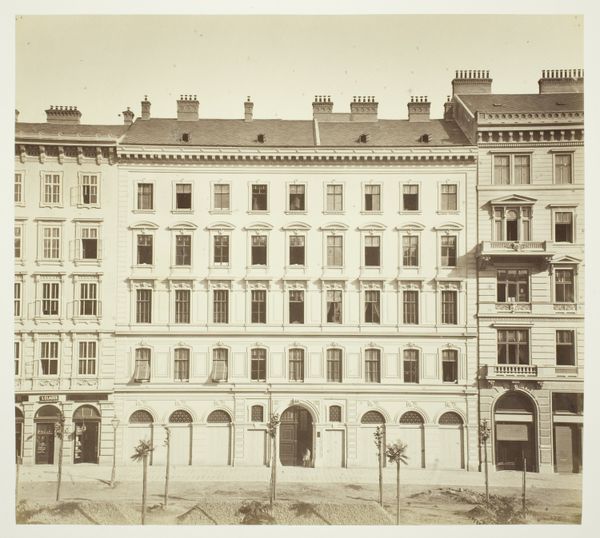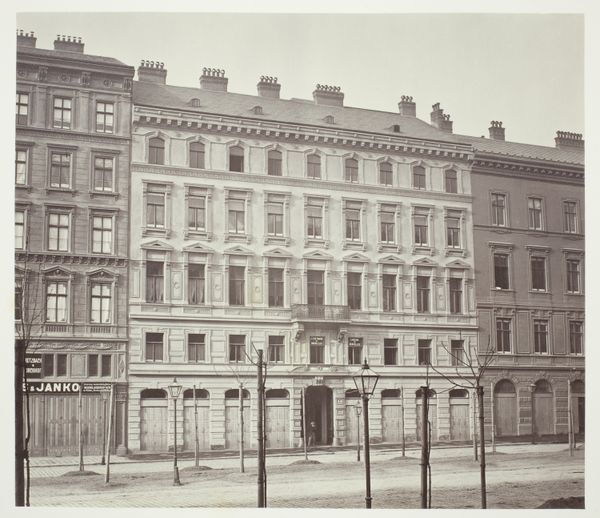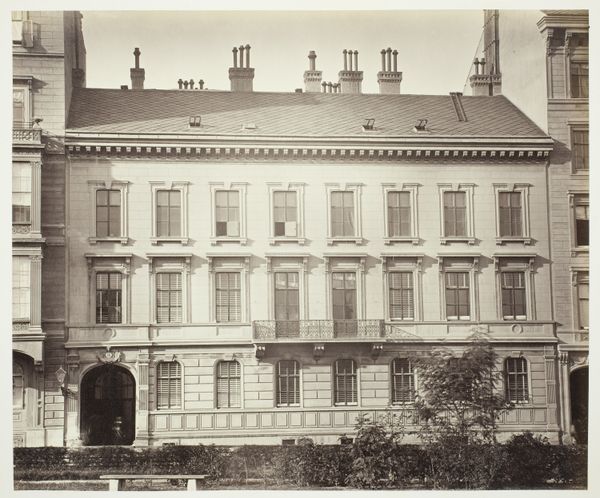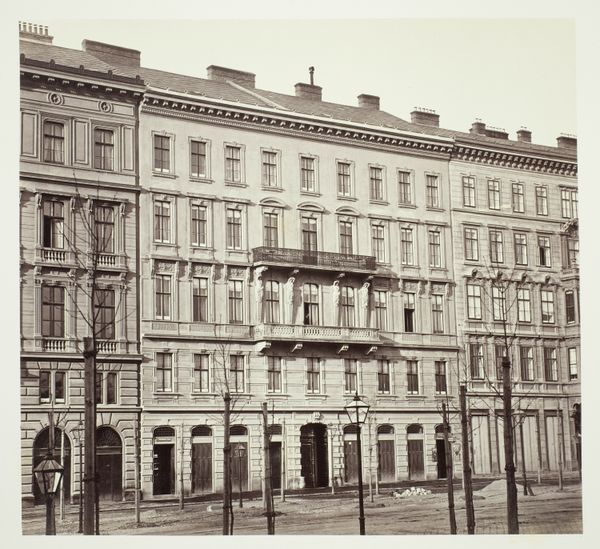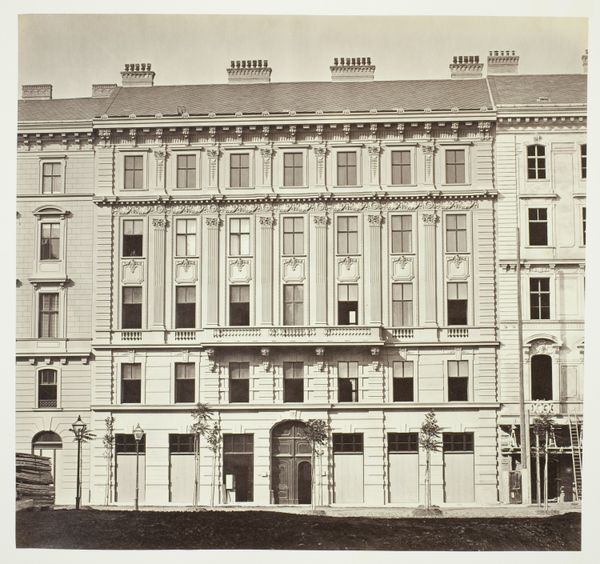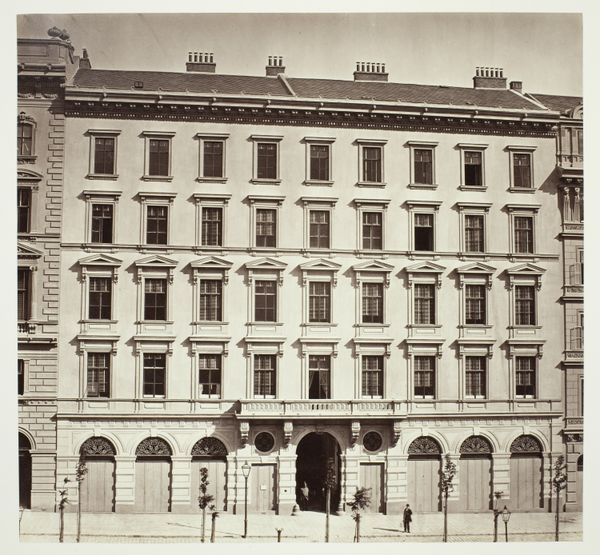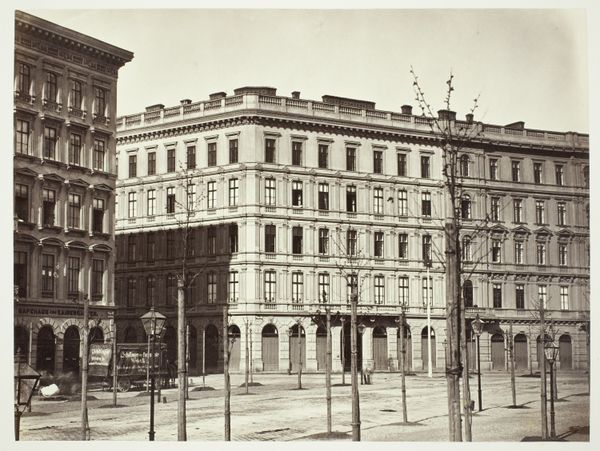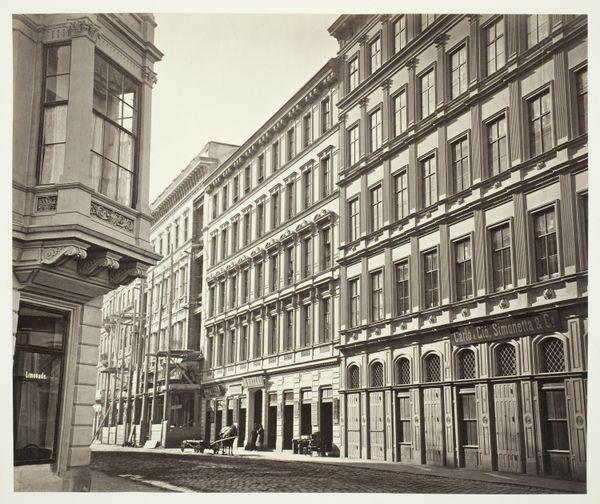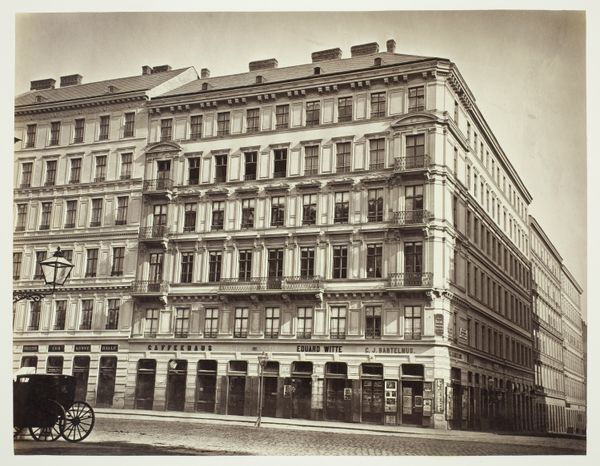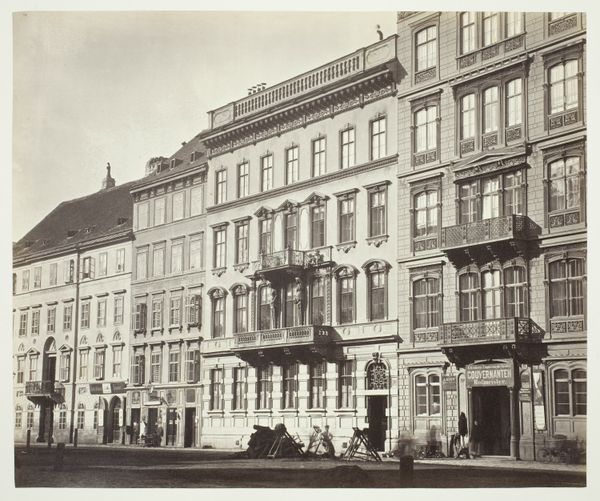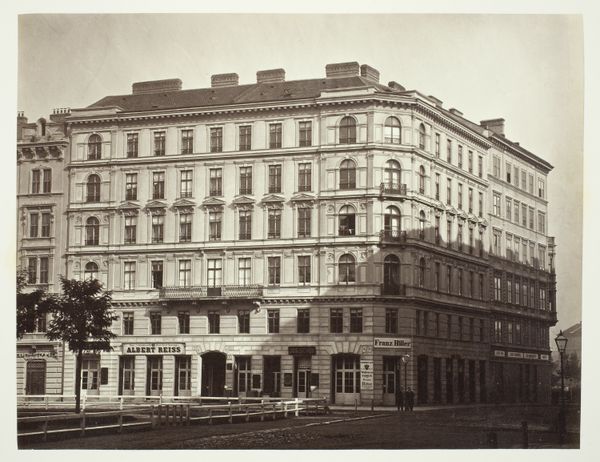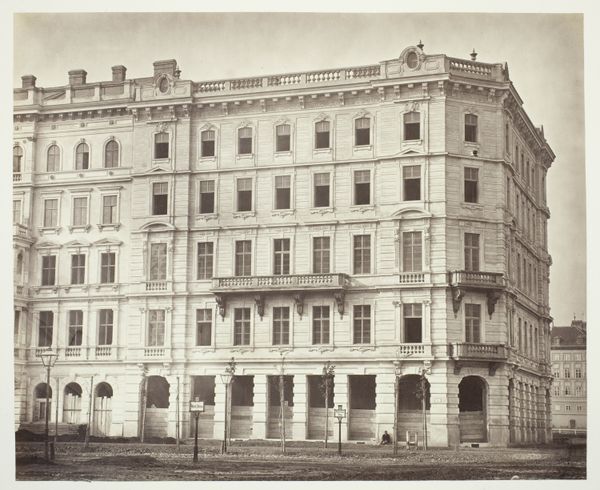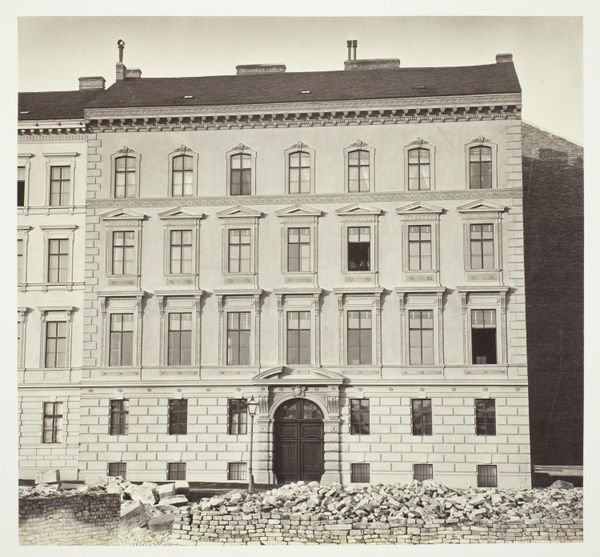
Kärnthner-Ring No. 4, Wohnhaus des J. Ritter von Königswarter c. 1860s
0:00
0:00
print, photography, architecture
#
16_19th-century
# print
#
photography
#
architectural drawing
#
cityscape
#
architecture
Dimensions: 24.8 × 28.4 cm (image/paper); 42.8 × 61.2 cm (album page)
Copyright: Public Domain
Curator: This photograph captures Kärnthner-Ring No. 4, the residence of J. Ritter von Königswarter, circa 1860s. Editor: My immediate impression is of a kind of austere elegance. The rhythmic repetition of the windows creates a compelling pattern, but there’s also a somber mood about the closed shutters on the ground floor. Curator: The closed shutters certainly speak to the period, hinting at societal norms regarding privacy and public presentation. This photograph isn't just about architecture; it's about status and social standing in 19th-century Vienna. Königswarter was a prominent figure; his residence would have been a significant symbol. Editor: I agree, the formal arrangement is important. Note how the building is framed by the flanking structures. This accentuates its volume. And yet, despite its formality, there is something lifeless about the symmetry—almost as if the house is merely an effigy of one. Curator: Interesting you say that, considering the burgeoning field of photography at the time. Photography aimed to capture reality, of course, but it was always presenting a carefully curated version of it. The photographer here may have been less interested in life than documenting urban development. Editor: Perhaps, but that intent doesn't negate the formal qualities. The subdued tones contribute to a kind of melancholic stillness. I am also thinking about the line, its exactitude is part of that formal composition. The slight distortion reminds one of the physical constraints of the photographic technology, the material of the era. Curator: I agree that the distortion is palpable and that we cannot discount its effect on one's impressions. We must remember, however, the technology allowed for new modes of documentation and created accessibility where none existed before. As a public image, it contributed to both memorializing a structure and popularizing new conceptions of urban space. Editor: Point well-taken. Ultimately, the photograph compels me to contemplate how its formal presentation contributes to constructing societal narratives in its historical milieu. Curator: For me, this image exemplifies how even seemingly straightforward architectural photography carries profound cultural and historical information within its frame.
Comments
No comments
Be the first to comment and join the conversation on the ultimate creative platform.
